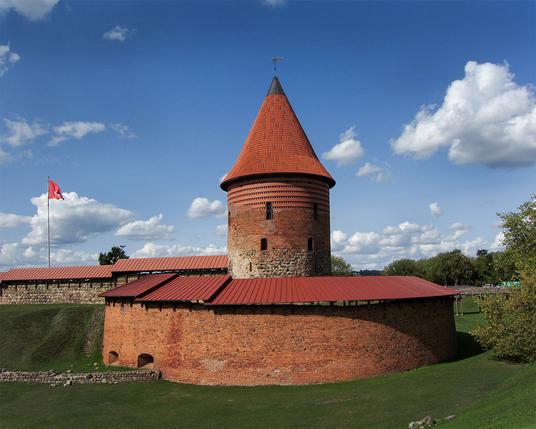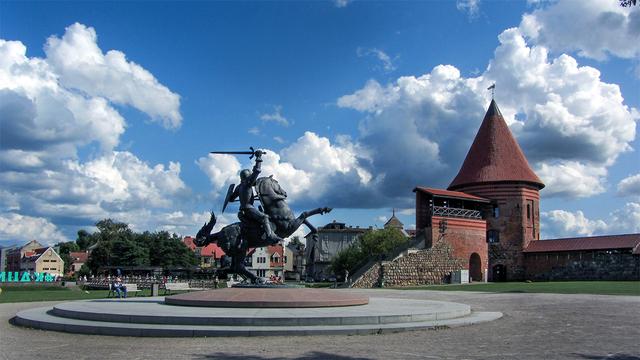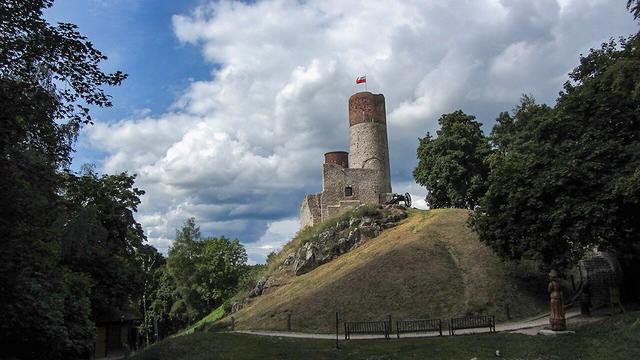Castle in Kaunas, Lithuania (part 2 of 2)
After the Battle of Grunwald in 1410, the castle lost its strategic importance and served primarily administrative and judicial functions. In the 16th century, it was expanded, including the addition of a bastion on the southeastern side. In the 17th century, floods and warfare caused further destruction. In 1655, the town and castle burned down during the Swedish invasion, and the building ultimately fell into ruin.
Until the 18th century, the castle served as a prison, and after the Third Partition of Poland, the Russians allowed houses to be built on its grounds, further exacerbating the damage.
The castle’s location next to the flooding Neris River contributed to the collapse of sections of the walls. Only parts of the structure survive today, including a four-sided tower, wall fragments, and a bastion from the 16th century.
Archaeological and conservation work was carried out in the 20th and 21st centuries, and between 2010 and 2011, a reconstruction project was carried out, including the reconstruction of part of the tower and walls.
Currently, the castle houses a branch of the Kaunas City Museum, and the building itself is a venue for numerous cultural events, festivals and knightly tournaments, constituting one of the city’s main tourist attractions.
#kowno #kauno #kaunas #litwa #lithuania #zamek #castle #pilis #wieza #tower #baszta #pogon #vytis #miasto #city #widok #landscape #historia #history
After the Battle of Grunwald in 1410, the castle lost its strategic importance and served primarily administrative and judicial functions. In the 16th century, it was expanded, including the addition of a bastion on the southeastern side. In the 17th century, floods and warfare caused further destruction. In 1655, the town and castle burned down during the Swedish invasion, and the building ultimately fell into ruin.
Until the 18th century, the castle served as a prison, and after the Third Partition of Poland, the Russians allowed houses to be built on its grounds, further exacerbating the damage.
The castle’s location next to the flooding Neris River contributed to the collapse of sections of the walls. Only parts of the structure survive today, including a four-sided tower, wall fragments, and a bastion from the 16th century.
Archaeological and conservation work was carried out in the 20th and 21st centuries, and between 2010 and 2011, a reconstruction project was carried out, including the reconstruction of part of the tower and walls.
Currently, the castle houses a branch of the Kaunas City Museum, and the building itself is a venue for numerous cultural events, festivals and knightly tournaments, constituting one of the city’s main tourist attractions.
#kowno #kauno #kaunas #litwa #lithuania #zamek #castle #pilis #wieza #tower #baszta #pogon #vytis #miasto #city #widok #landscape #historia #history



